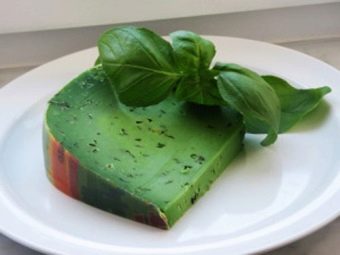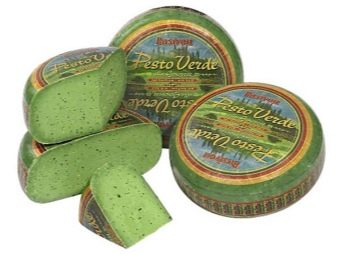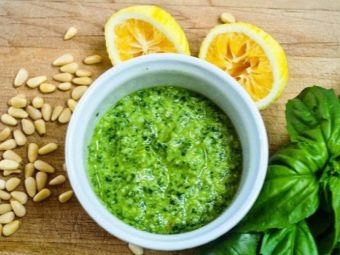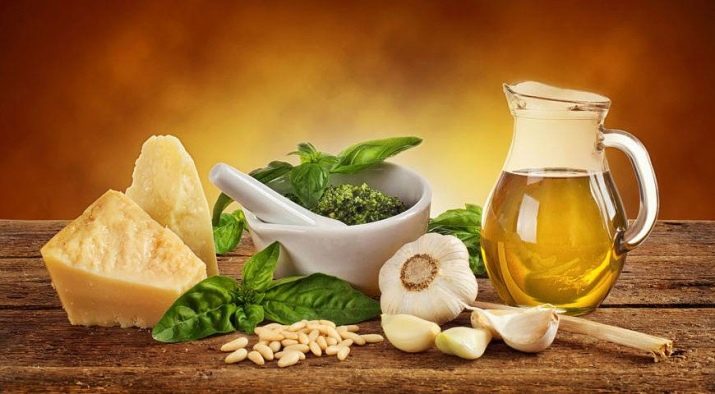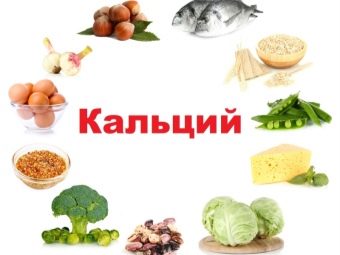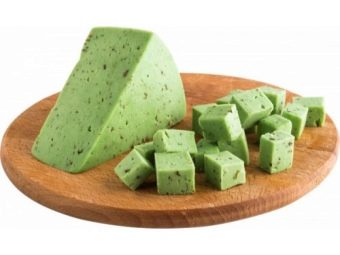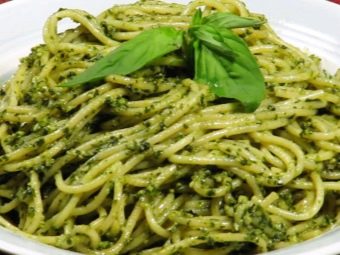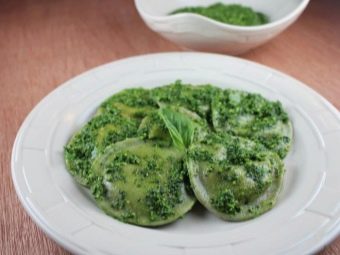Green Cheese: Ingredients and Tips for Eating
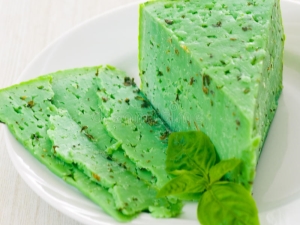
Most consumers are accustomed to the fact that cheese traditionally has a yellowish or white color, because such a curiosity as green cheese is of genuine interest to one part of potential buyers, and to the other, on the contrary, suspicions that the product simply disappeared.
The last statement does not correspond to reality if a variety of cheese called Pesto has a characteristic color. This product is still unknown to a wide range of domestic consumers. Those who have already tried it, yet have too little information about it.Let's try to figure out what it is and what it is eaten with.
What is it?
Since the product is exotic, it’s probably worth starting with a more detailed presentation. Pesto cheese is still relatively little known for the simple reason that it does not have a centuries-old history - it appeared quite recently, and even as a culinary experiment. Anyone familiar with Italian cuisine, he knows that the similar name has a basil sauce based on olive oil, which also includes garlic and pine nuts. The lucky ones, who have already appreciated the taste and aroma of such cheese, note that the similarity with the sauce is very noticeable.
As befits a dish typical of Italian cuisine, Pesto cheese was born in the Italian city of Genoa, but its production was not delivered there, but in the distant Netherlands. It’s pretty easy to understand that there’s no fake in front of you: the color and the smell of basil with garlic, the characteristic eyes of a medium size, and the label indicating import origin will be original, because in our country no one has yet decided to manufacture such products.
Composition
As befits a rare and expensive cheese, Pesto belongs to natural products, and therefore all aspects of its unusual taste and smell are due to the inclusion of the appropriate ingredients in the composition. The base is the usual cow's milk, which is fermented according to typical cheese-making technology - with the help of leaven and rennet. A characteristic difference is the additive to basil in the sour milk, which is responsible for the characteristic shade of the final product, garlic, as well as some other herbs.
The technology of preparation is quite complicated, because of the mass containing a bunch of vegetable inclusions of plant origin, it is not easy to squeeze the serum without losing the original taste and aroma. After pressing, the unusual delicacy is soaked for a few more days in a special brine, after which it is thoroughly dried and allowed to lie for a whole year in the storage for ripening at a temperature below 10-12 degrees and high humidity, approaching 95%.
If we talk about BZHU, then 100 grams of the product, cut off from the average cheese head, contain 23 grams of proteins and 32 grams of fat. The percentage of carbohydrates can be considered insignificant in cheese. Such dairy delicacy has a very high calorie, reaching 380 kcal.
Why is it recommended to use?
Most cheeses are considered to be a comprehensively useful product, which is desirable for everyone to maintain their own health, and Pesto is not an exception to the rule. Its main ingredient, milk, is rich in various vitamins and other useful components, and supplements in the form of basil and greens largely compensate for the lack of certain substances in the milk.
The first, for which such a product is very much appreciated, is a significant content of vitamin C, which is best known for its ability to strengthen the immune system, but it also has other useful functions in the human body. As befits any natural cheese made from milk, Pesto is also very rich in calcium and phosphorus, actively involved in the "construction" of bones and teeth, because a person who is not lacking in these minerals is much less at risk of serious injury.
Potassium and magnesium, which work in pairs, are also abundantly represented in this delicacy, but they are an indispensable condition for the functioning of the heart and circulatory system. Complements the picture of the overall usefulness of the product sodium, restoring the water-salt balance in the body and allows you to maintain the nervous system in a functional state.
Even from the above, it turns out that the use of Pesto cheese leads to the normalization of the work of the whole organism, but in fact even the list of useful components is not complete.
The composition includes much more beneficial trace elements, vitamins and amino acids, which are simply represented in smaller quantities, and therefore their action is expressed not so brightly.
Who is contraindicated with pesto?
As is often the case, the comprehensively publicized benefits of a product can turn into harm if one does not pay attention to small clarifications regarding the groups of consumers with whom this product is contraindicated. Pesto is not an exception - it must be used wisely, and in some cases it is completely forbidden to use. A prime example is people who are overweight. They should be very careful to use cheese, whose energy value reaches an impressive 380 kcal per 100 grams.
For most cheeses, one of the few contraindications is individual lactose intolerance - this problem is relevant in this case too. Another thing is that usually cheeses do not contain any other potential allergens, and here all these herbs used in cooking can be a risk factor, because allergy to any one of them puts an end to the use of the whole composition.
By the way, perceptible spiciness and light garlic sharpness of Pesto will seem pleasant to many gourmets, but not to those consumers who suffer from diseases of the gastrointestinal tract. Ulcer and gastritis with high acidity almost certainly signifies a rejection of such a product, although it is possible that with a mild chronic form of the disease, individual doctors as an experiment may allow the patient to introduce such a product into the diet in small quantities.
In any case, putting health at risk without first consulting a doctor is definitely not worth it.
Particular care in the use of Pesto should be shown to pregnant women and mothers who are breastfeeding. The reaction of a child’s body to a cheese containing many savory ingredients may be far from joyful - after all, such a component of the mother’s diet can ruin the taste of milk. Due to the relatively low prevalence of the product, not every doctor will be able to determine exactly when such a product can be included in the diet and in what quantities, therefore, for the sake of the safety and health of the child, eating such delicacies should be delayed.
Ways to eat
If there are no visible contraindications to the use of an exotic product, it remains to understand only how to eat it properly. It should be noted that Pesto is used as versatile as almost any other cheeses.
First of all, this kind of cheese is consumed raw, and it is often served at various expensive events as part of a cheese plate, not only because of its taste and aroma, but also due to a completely atypical appearance that contributes to the decoration of the dish. Pesto is the perfect appetizer for champagne and white wine, both as part of a cheese platter and on its own.
As for culinary delights, in the case of Pesto, you can experiment with everything that can contain cheese in Italian cuisine. For a modest and light breakfast, you can get by with unusual green sandwiches, but for exquisite guests it is worth serving pasta or pizza - the same exotic color. By the way, this cheese melts on a par with most others, because it can even be used in baking.
Pesto looks great and in the composition of salads, replete with greens. From this dish you can get not only gastronomic, but also purely aesthetic pleasure.
Finally, it should be noted that the Pesto cheese, to which the creators were inspired by the sauce of the same name, can also be used as an ingredient for preparing a savory sauce, and also with an uncharacteristic color.With the recipe, many will have to experiment in view of the novelty of the main ingredient, but fish and meat dishes served with this sauce will acquire completely new notes, which will combine both the famous Pesto sauce and unique notes of fresh natural cheese.
The most interesting about the origin and preparation of cheeses, see below.

